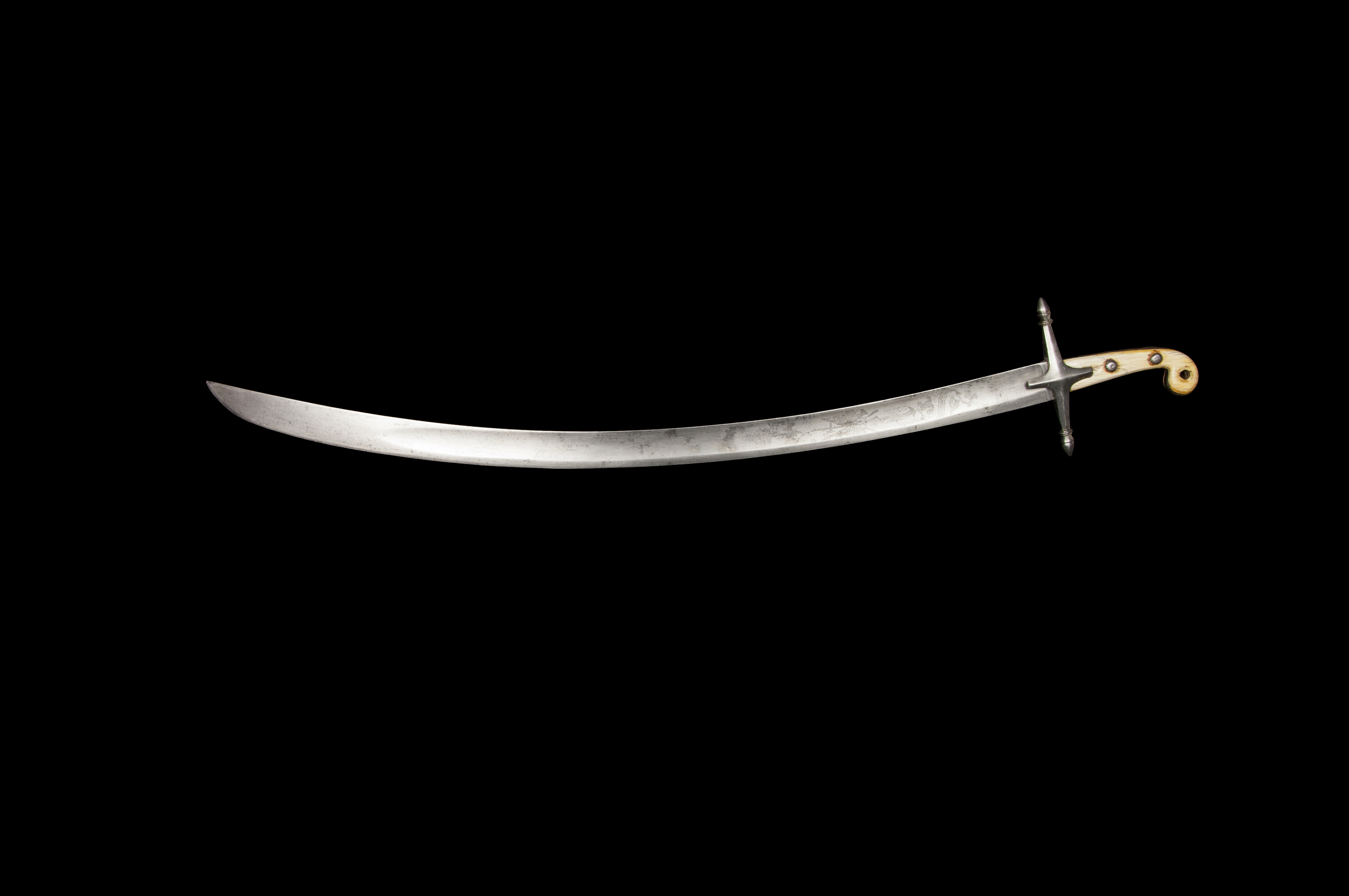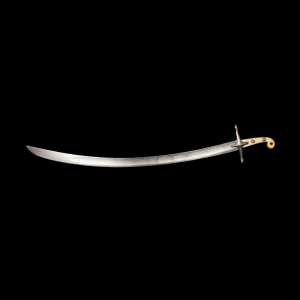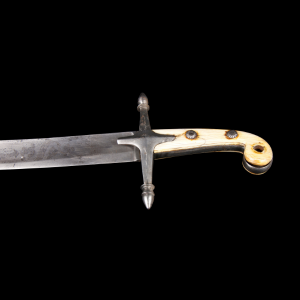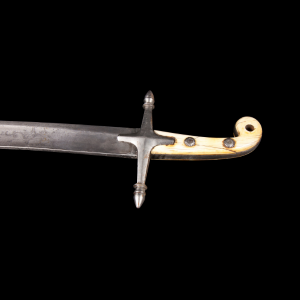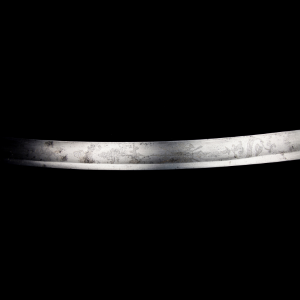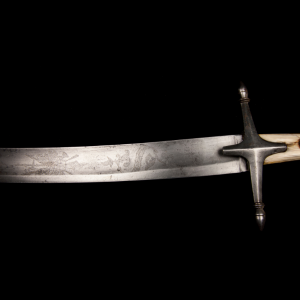Sabre
Author: Unknown
Origin: Unknown
Dating: 19th century
Material: Metal
Dimensions (cm): 95 x 21
Weight: 901 g
Inv. no.: PD1045 / MAS 418 / A.G. 121
Characteristically, the blades of sabres are curved. Therefore, they are traditionally associated with cavalry for the curvature of the blade facilitated thrusts in the face of air resistance when galloping.
Later, the sabre moved from the cavalryman’s hand to that of the fencer, becoming one of the three disciplines of this secular art. The disciplines of fencing are distinguishable not only for the type of blade but also for the areas of the body meant to be struck.
The most violent of the disciplines is the Épée in which the entire body is a valid target. The Foil targets only touches on the torso. The target areas for the Sabre are above the waist, excluding the hands, for that was the attack radius of a horseman against a foot soldier.
